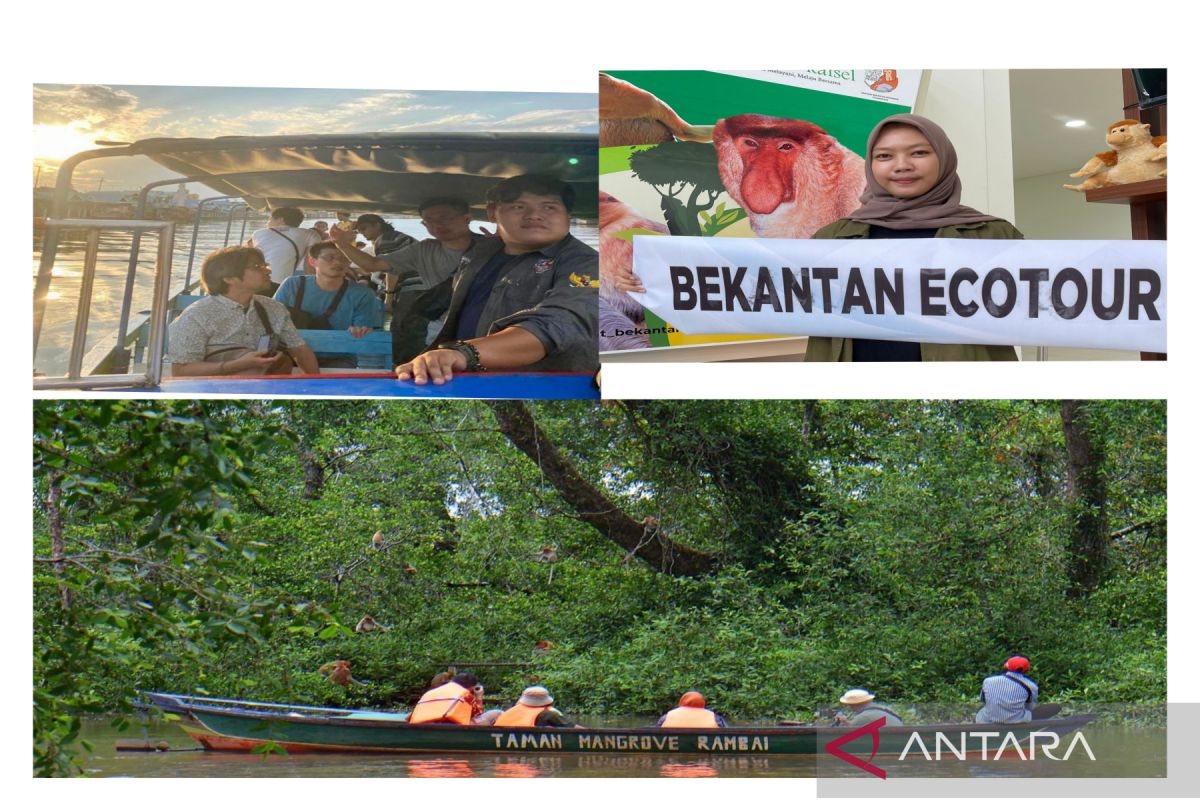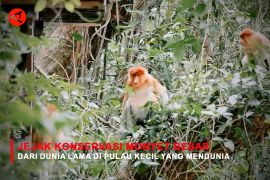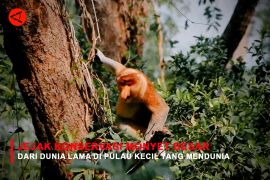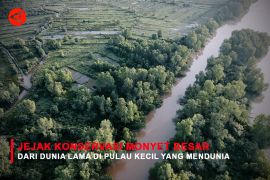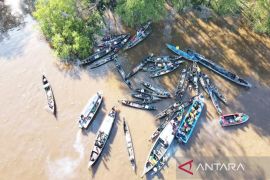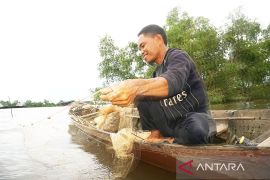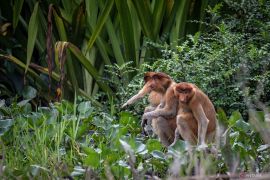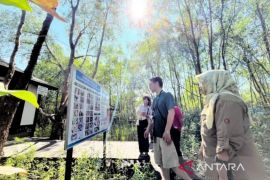Banjarmasin, S Kalimatan (ANTARA) - Some 20 tourists from Japan and Hong Kong visited a conservation area for long-nosed monkeys Bekantan on Curiak Island, Barito Kuala District, South Kalimantan.
"We invite the foreign tourists to Roberts Team Camp at the Bekantan (proboscis monkey) Research Station to witness monkeys in the rambai mangrove forest typical of wetland," said Director of Special Interest Tour Development of Sahabat Bekantan Indonesia (SBI) Foundation Ferina here on Monday.
Having satisfied observing the life of bekantan, the foreign tourists were then brought to Sewangi Island to watch the process of making jukung traditional boat as well as the daily activities of people with local culture and wisdom of their living on the banks of the Barito River.
The Japanese and Hong Kong tourists' visits were closed with river cruising tour in Banjarmasin City.
Ferina said Japanese tourists often come for special interest tours to observe the behavior of probopscis monkeys at the Bekantan Research Station area of Curiak Island.
The biggest visitors to special interest tourism are Australia and Europe, dominated by universities and nature tourism enthusiasts.
Even in July, Curiak Island will also receive a group of around 40 Australian tourists who are holding "summer course" or summer class study program.
To welcome tourists who want to stay overnight and enjoy the sensation of the night atmosphere in the mangrove forest, SBI is building a simple lodging facility and a "camping ground" this year.
It also will provides canoes for small river cruising activities in the mangrove forest area of Curiak Island.
"The trend for special interest tour is currently increasing and we are optimistic about the development of this tour. Besides promoting conservation and nature preservation, it also improves the economy of the local people," said Ferina.
Bekantan are endemic monkeys that only live in Kalimantan, especially on the fringes of forests near rivers, peat swamp forest, swamp forest, freshwater swamp forest, mangrove forest, and sometimes far into the inlands.
The endemic animal with a long and large nose and reddish-brown hair is the mascot of South Kalimantan fauna.
Read also: Curiak Island special site within Meratus Geopark area: GGN
Read also: South Kalimantan improving access to orchid-producing village in HSS
Read also: Tour visits getting busy to Meratus Geopark's Loksado


